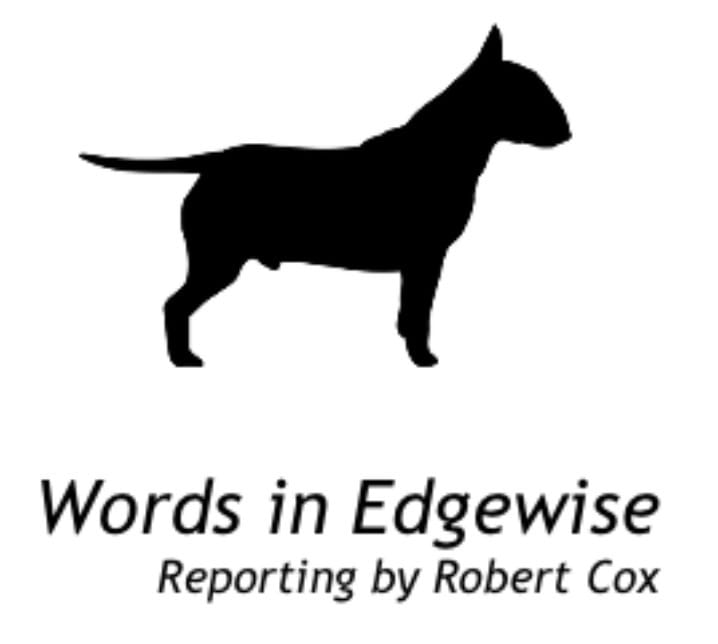OP-ED: With New Rochelle Schools in Full-On Crisis, Leadership Must Act
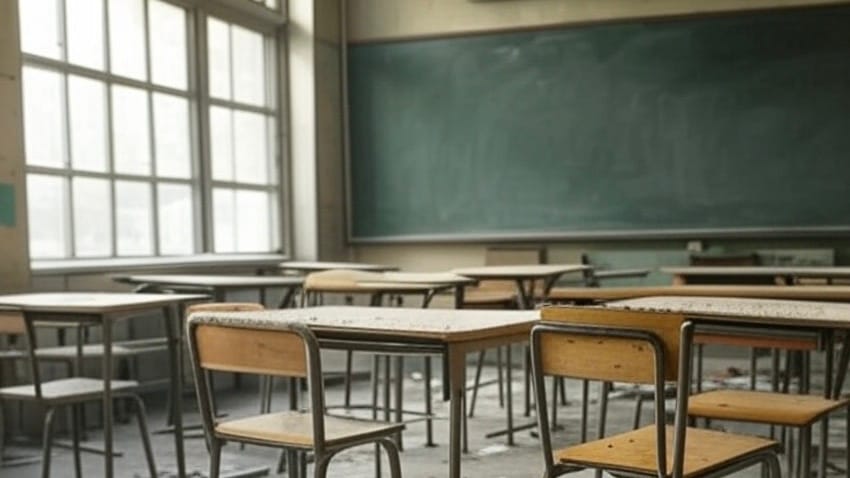
By Robert Cox and Andrew Newman
Four years ago, we sounded the alarm about a “catastrophic collapse” in enrollment at the City School District of New Rochelle (“CSDNR”). We were right then, and we are right now on what needs to happen next to avoid further collapse over the next five years.
Key Takeaways from this article
– The district faces a $20 million budget shortfall in 2025-2026, on a $359 million budget, based on a 3.95% tax hike, and 200 job cuts.– Enrollment at New Rochelle’s CSDNR has dropped 10% since 2015, with a projected 20% decline from 2015 to 2030.– Safety issues and academic scandals have driven families away.– Leadership ignored our warnings — and Western Suffolk BOCES data — while expanding payroll as enrollment fell.– A charter school will take 600 pupils over 5 years, further shrinking enrollment.– Recommendations: (1) Re-engage WSB for updated analysis; (2) hire a consultant specializing in managing enrollment declines; and (3) study “What About Barnard?”
Cold Facts
In 2021, we projected a 20% decline in students—from 10,996 in 2019 to 8,972 by 2030—based on Western Suffolk BOCES (“WSB”) studies and our analysis of the WSB data. We warned of devastating financial consequences. It gives us no joy to say our warnings then have now come to pass.
The district’s refusal to confront reality has led to a $20 million hole in a $359 million budget, a 3.95% tax hike, and a desperate plan to slash 200 jobs. This isn’t just a statistical blip; it’s years of a failure of leadership that demands accountability.
Putting a finger in the proverbial dike this year, as proposed by Superintendent Dr. Corey Reynolds, will only result in continuing and exacerbating the crisis, making what’s happening today an annual event, out to at least 2030.
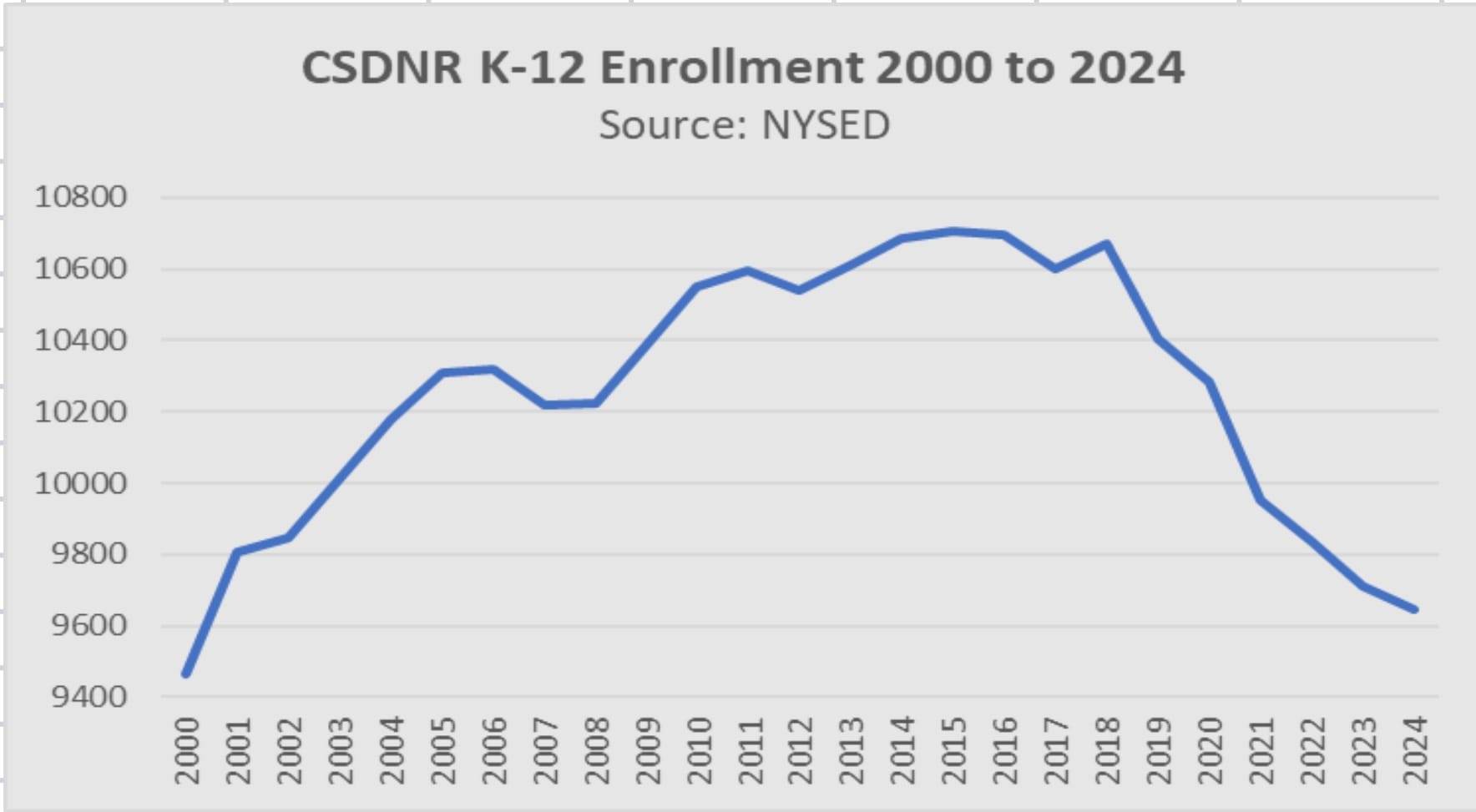
The decline began in 2015, with enrollment dropping 10% since its peak until today, as shown in Chart #1. Despite receiving short-term, one-time, COVID-related increases in state aid, CSDNR inexplicably used this money to expand its payroll as classrooms emptied—a shortsighted move we cautioned against. Once the COVID-money sugar-high ended, the cost of those additional employees was folded into the general budget, driving the gap between revenue and expenses even wider.
In 2021, we recommended managing a reduction in headcount through attrition and retirement. Instead, district leadership ignored the data — and our repeated warnings — and now taxpayers are being asked to foot the bill for their denial.
Safety issues, low test scores, and academic scandals have accelerated the decline. The 2018 “fake diploma” scandal at New Rochelle High School, the murder of student Valaree Schwab by a classmate that same year, a near-fatal classroom stabbing days later, and the assassination of a student walking home from the high school by a fellow student in 2022 have sown fear and eroded trust.
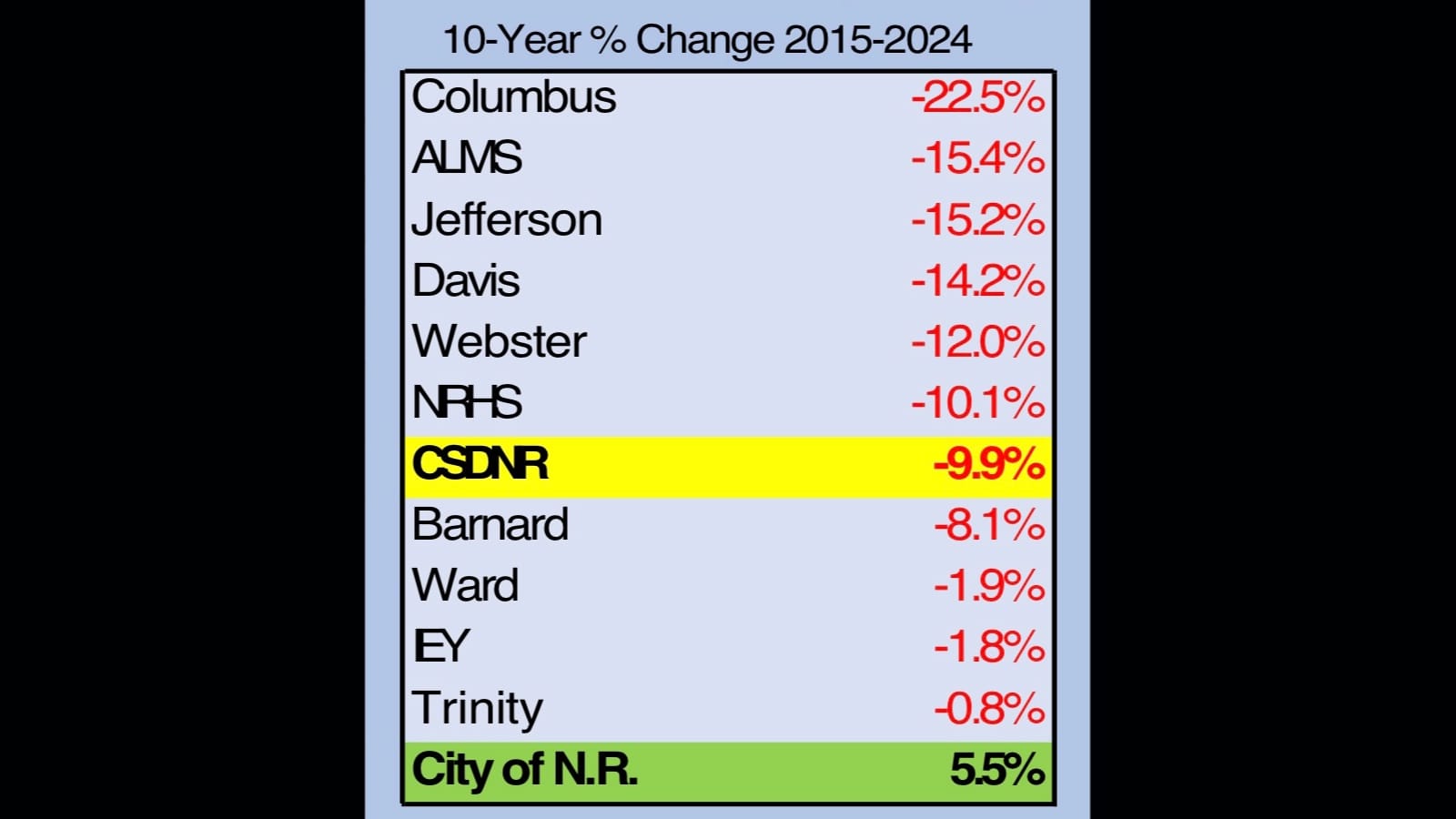
Table #1 shows the toll: all 10 district schools saw enrollment declines over the past decade, resulting in a 9.9% district-wide decrease, even as New Rochelle’s population grew by 5.5%. Neighboring districts report only slight drops or flat enrollment, suggesting CSDNR’s losses stem from local failures—what we called the “perception of quality” in 2021.
Not Foreseeable, Foreseen
The district had the tools to anticipate this. In 2015, under then-Assistant Superintendent Jeff White and then-Superintendent Brian Osborne, CSDNR hired WSB, a top-tier demographer, to analyze enrollment. Updates in 2017, 2018, 2020, and 2021 refined the picture, with the 2021 report proving particularly prescient.
Andrew Newman, co-author of this article, undertook an exhaustive 10-week series in 2023 on WVOX radio. “State of Our Schools” was a detailed exploration of the challenges facing CSDNR, primarily those tied to declining enrollment. The series was widely followed at the Central Office of the New Rochelle Board of Education.

Chart #2 shows a near-perfect match between previous downward projections and the actual numbers reported by CSDNR to the New York State Education Department.
In March 2021, Barbara Graziano of WSB presented the 2020-2021 update to the New Rochelle Board of Education, detailing the ongoing decline. During the Q&A, board members hostilely engaged Graziano in what we described as “magical thinking,” questioning the data, from Kindergarten enrollment, to the impact of unaccompanied minors entering the country, the reliability of 2020 Census data, and hypothetical influxes of families from New York City due to COVID-19 that failed to materialize.
Rather than focusing on actionable solutions, district leadership put their collective heads in the sand. A reluctance to face reality has only served to deepen the crisis.
One current board member dismissed concerns by shooting the messenger. She publicly proposed dumping WSB and seeking a different source of projections. WSB never returned, and no new projections have been made since. As the school community has found out the hard way, ignoring the evidence did not reverse the population declines.
The adopted 2025-2026 budget of $359,468,597, with a $240,741,929 tax levy—up 3.95%, exceeding New York’s tax cap—signals the reckoning. A $20 million shortfall, minimal levels of state aid, and a new charter school approved in 2024, funded with $1.95 million from CSDNR and projected to draw 600 students over the next 5 years, have forced a U-turn: 200 positions are now on the chopping block.
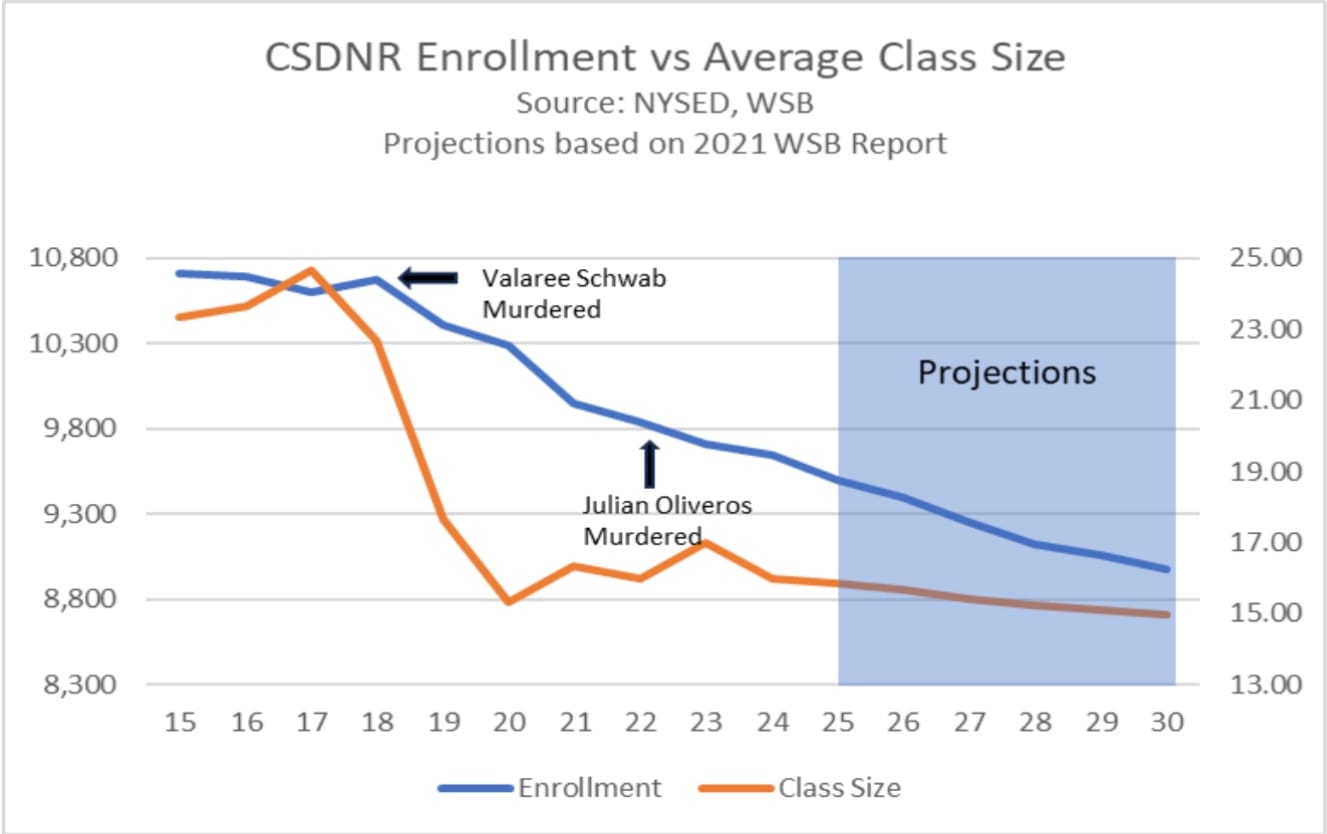
Chart #3, a predictive model of class size based on the 2021 WSB update, shows shrinking cohorts and unused capacity.
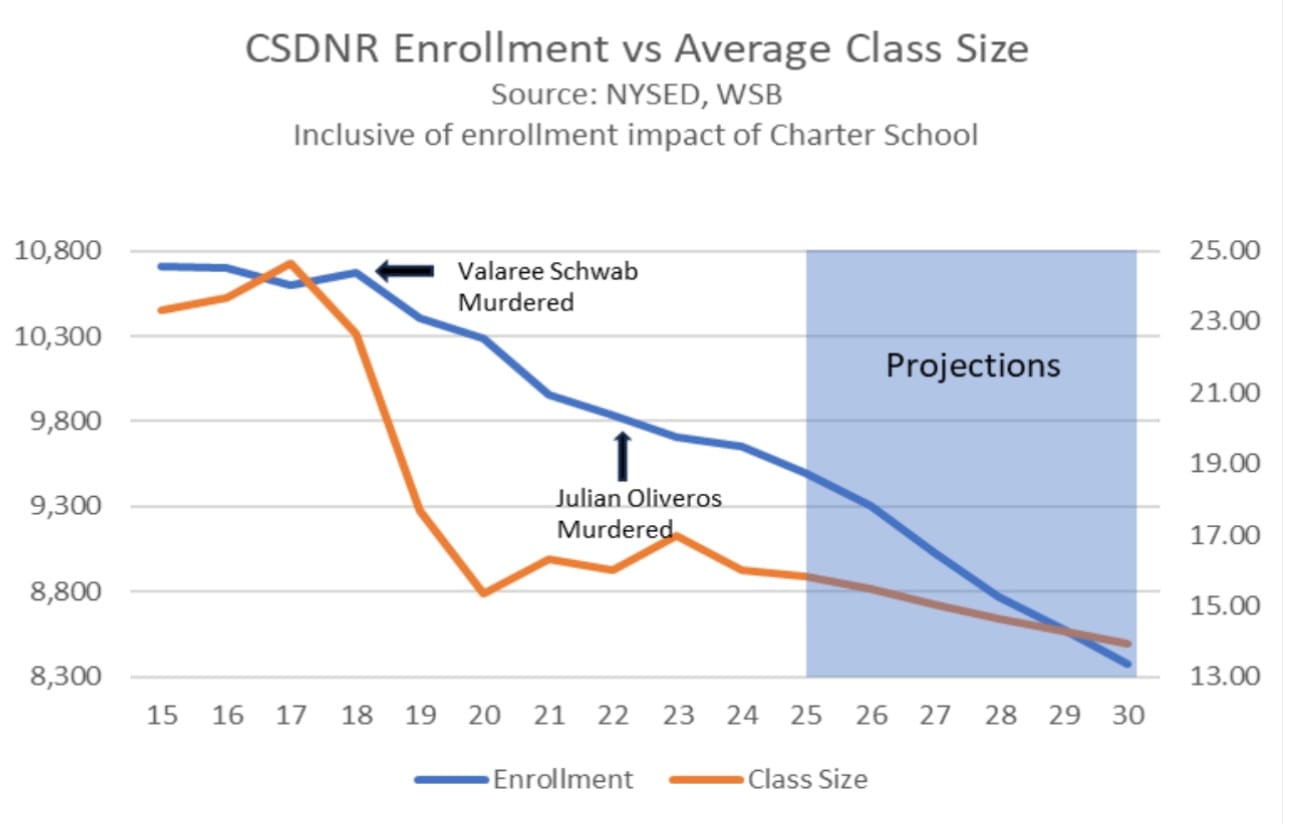
Chart #4, factoring in the charter school, paints an even bleaker picture of half-empty classrooms, districtwide.
This isn’t uncharted territory. Between 1978 and 1983, CSDNR engaged in a process to address falling enrollment that resulted in the closure of four elementary schools — a decisive move requiring courage today’s leaders lack.
What’s Required
- The district must re-engage WSB for a fresh analysis; four years without an update is indefensible, especially with the charter school’s impact looming.
- CSDNR should hire a consultant experienced in managing rapid enrollment declines.
- Community members and district leaders need to read “What About Barnard?” by Dr. La Ruth Grey, which recounts the district’s last reorganization more than four decades ago.
Denial Has Run Its Course
The collapse we wrote about in 2021 — and foresaw as far back as 2019 — is unfolding as predicted. CSDNR leadership can either act decisively or let New Rochelle’s public schools fade into irrelevance for education-sensitive parents with alternatives such as pulling their children out of the public schools or moving out of New Rochelle altogether. Many already have — notably affluent African-American parents — which we described in 2020 as “black flight”.
The choice is theirs—and ours — immediately take on the hard decisions or face a cascading series of failures until the public schools are left only with families who lack the mobility to choose alternatives for the education of their children. Taxpayers and students deserve a plan rooted in reality.
RELATED:
What about Barnard?: Phase II Reorganization of the City of New Rochelle School District (1978-1983) by La Ruth H. Gray, EdD
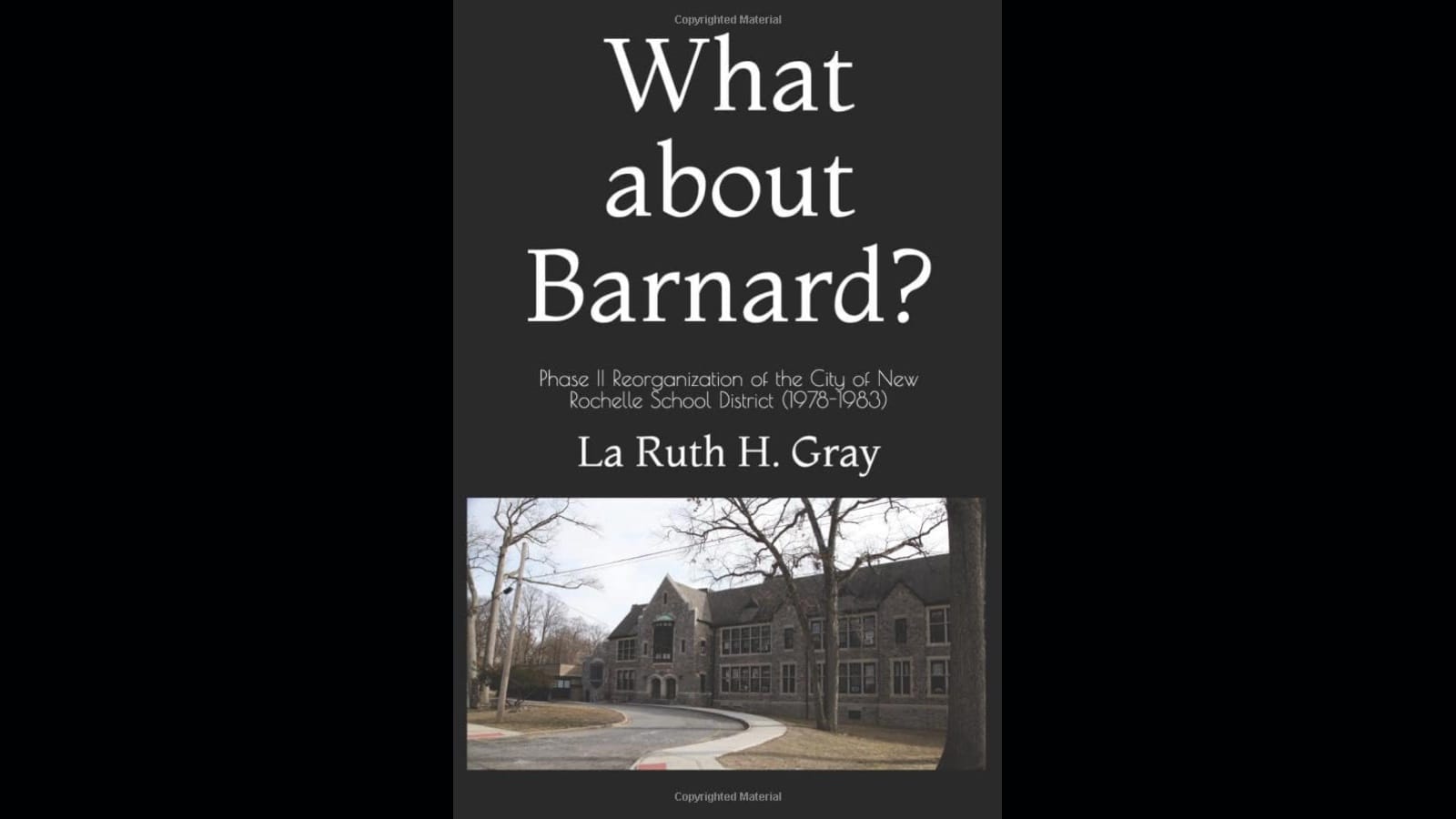
Catastrophic Collapse of New Rochelle Schools’ Student Enrollment Underway
Demographer Report on Enrollment to New Rochelle Board of Education March 23, 2021 with Board Q&A
NEW ROCHELLE SCHOOLS EXODUS: 4.5% Decline in Pupil Enrollment in 2 Years
Framing a Discussion about Equity in the New Rochelle Public Schools (Black Flight)
